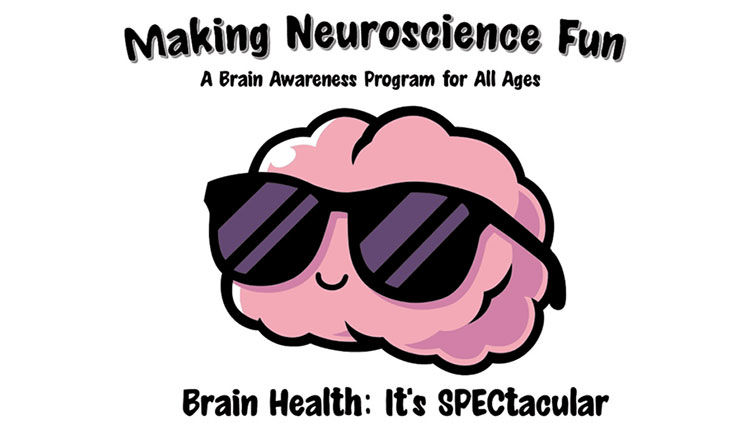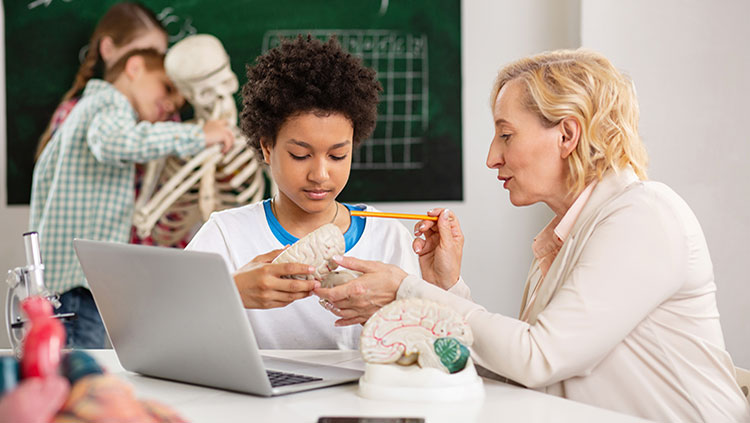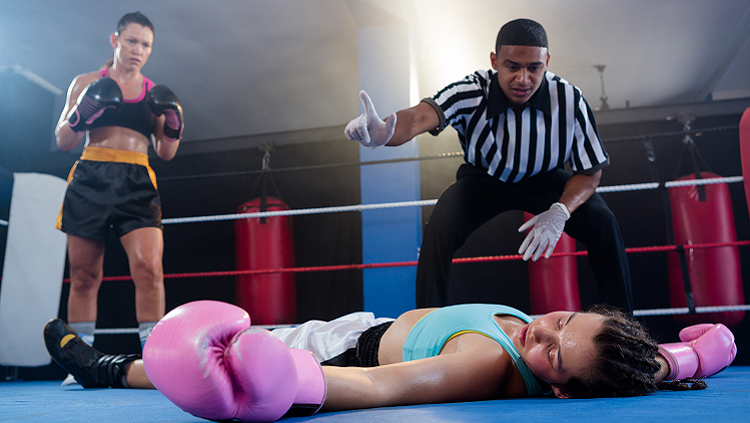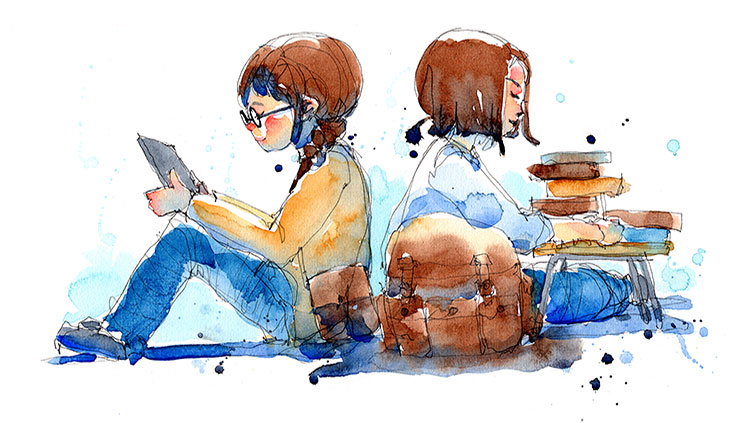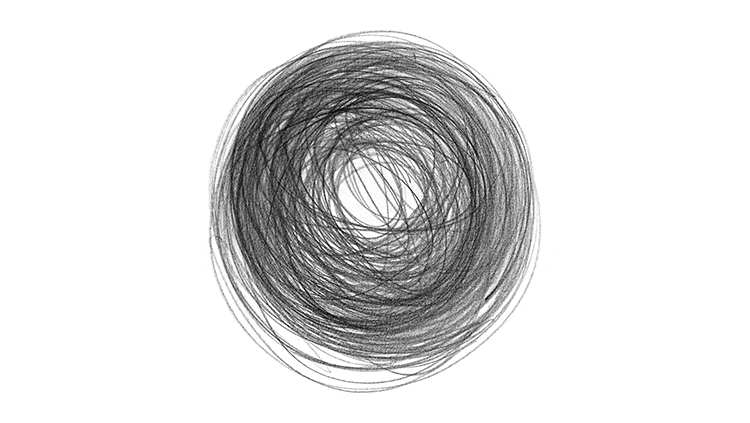Brain Health: It’s SPECtacular (Ep. 1) — How to Teach Brain Health in Schools and Communities
- Published31 Jul 2025
- Source BrainFacts/SfN
Ready to bring the “Brain Health: It’s SPECtacular” program into your school or community? In this final video of a six-part series, Linda Gorman, neuroscientist and Founder of Making Neuroscience Fun, LLC, walks through how the full SPEC program — centered on social, physical, emotional, and cognitive health — can be easily integrated into Pre-K through 5th grade classrooms.
Backed by 30 years of neuroscience research and developed in partnership with Johns Hopkins University, the program uses age-appropriate stories, lesson plans, hands-on activities, and flexible delivery models to help kids build lifelong brain health skills.
Whether you’re a teacher, counselor, parent, medical student, or volunteer, this video gives you everything you need to make neuroscience fun, accessible, and impactful for young learners.
Check out other videos in the six-part video series:
- Episode 2: How Social Health Builds the Brain
- Episode 3: How Physical Activity, Sleep, and Nutrition Impact Brain Development
- Episode 4: Why Emotional Health Matters for a Growing Brain
- Episode 5: Attention, Learning, and Memory Shape Growing Minds
- Episode 6: Teaching Brain Health in Schools and Communities
Explore Making Neuroscience Fun — Brain Health: It’s SPECtacular from Johns Hopkins
CONTENT PROVIDED BY
BrainFacts/SfN
Transcript
Dr. Linda Gorman:
Okay. How do you bring this program to your schools?
Now, again, when I created this program, I was creating content. And I thought once I had the content, I could throw it out in the world and the schools would just use it. But you guys have so much to do, so that's why I've partnered with SfN. And basically, the whole content is around stories. I've written stories for Pre-K through 5th graders that all follow the same fundamental concepts. They're anchored in science. So there's science to back up where these stories are coming from. They're fun and informative, they're age-appropriate, and they're accessible — open-sourced to everyone.
Now, I went with Pre-K through 5th grade because when I was little, that was elementary school. Now, 5th grade is falling more into the middle school realm. But I know that for Pre-K through 5th graders, telling stories — telling them stories — is a good way to teach them information.
So, I have all of these stories. I've got seven grade levels. I've got six stories per grade level: brain facts, because you have to know something about your brain; social, physical, emotional, cognitive health; and then we summarize it all into brain health. What we have is on the Hopkins website. We basically have all of the materials that you need in a downloadable format. I show you the link later on, but you can go to “Making Neuroscience Fun,” it gets you directly to the Hopkins website. Everything you need to present this program to your school is there.
Now, it's anchored in science. I was really adamant about doing this because basically, I don’t want you to think I’m just making things up. There’s science behind what I’m doing. There’s actually 30 years of science and research that I’ve done myself that are behind this. So, every story has a science behind the story. And basically, it lists the three main points of the story, and it also tells you how that fits into what the students are supposed to be doing at that particular age. It describes the science and lists the references. So you don’t have to take my word for it — you can go read about it. And these references are in reputable journals, journals that have been peer-reviewed, the experiments have been replicated and deemed that yes, this is how the science is as we know it right now. Remember, we can learn something today that’s going to change things, so we need to keep changing this.
And then it also describes the correlation with some other metrics that schools use: the Next Generation Science Standards, the Counselors Association Development Guides, the education standards from National Health and CDC.
We made it fun and informative. I found that when you make anything fun, it’s so much easier to learn — it’s so much more fun to learn. So we have PowerPoints. This is a third-grade emotional health story, “I Want It Now.” Obviously, this is about regulating our emotions. And so we’ve made the stories, and I’ve worked with curriculum development people in making sure that the concepts that we’re using — not only do they fall into the realm of where the brain’s development is, but what the students’ behaviors can be at various ages.
We have a script only because that’s just me. Once I do a PowerPoint, I have the script with it. Once the script is there, I know it. If I go brain-dead, it’s there. So it’s there. So I figured, I wrote it, I’ll give it to you guys.
The activities — this was something when I developed MNF, “Making Neuroscience Fun,” and we were delivering it to schools, teachers wanted more activities for the kids to do that reinforced the content. So every story has five different activities. And we did this before AI popped up and Comingo and all those other things. Now you can basically go in and type in what the main point of the story is and you get tons of activities.
Now, the activities that we have here — we wanted to make it open-sourced, accessible to all. So basically, all of the materials that you need are going to be things that kids can find in school, out of school — anybody can find them.
We also have, along with the summary of the five activities, every activity has an instruction sheet, which tells you the materials you need, tells you how to prepare to do this activity, gives you step-by-step instructions.
We then have “Power Your Brain” challenges. These are the summative assessments. And for each story, there are ten questions, which basically see if the kids learned the concepts. And again, we use these in lots of different ways. Sometimes we put a little PowerPoint presentation with them so that students can answer them. Sometimes we do a hand-raising thing. But you know, kids love to do those kinds of things. They're age-appropriate.
Every story has the story general information, which gives you the basics of what the story does and is all about and makes sure that it tells you how it matches to the curriculum for that particular grade level.
We have a “What to Do Today.” This is something that we’ve just recently done and piloted over the last year and a half. This is basically a lesson plan. So I call it my “idiot-proofing” of the program. So it basically tells you, “Okay, for this presentation, if you're going to present it, this is what you need to do, this is what you need to have.” Then it goes through and says, “Start the video,” and it says, “Go to this part of the video,” and then “Stop the video.” And it tells you how to engage with the students in an age-appropriate way. These are totally modifiable — so it depends on how much time you have, depends on what your class is. And you know, sometimes your class is very good, you can engage them. Sometimes they’re like hyper and all over the place. So it sort of gives you hints on how to deliver the program.
Now, making it accessible to all: when I developed this program, I developed this program with the Office of the President at Johns Hopkins. He basically funded the development, and now Hopkins is supporting it. So that’s why all of the information is there on the website.
The website — like I say, if you go to makingneurosciencefun.com, it will take you right to our website. All of the videos, you can access them through our website, but they’re also housed on YouTube, so we make it accessible to all.
Now, in terms of distribution — and this is the thing that keeps changing — so I originally wanted it to be that students could do it by themselves. They could watch the videos, so, self-administered. So students can go in, all they have to do is click onto what grade level they’re in, and it’ll show them the stories, and they can start watching the stories. And they can watch the stories on their computers, tablets, phones.
Also, we have it facilitator-led. Now again, originally I was doing it for teachers, but now what we’re finding is that the best way to deliver this program for teachers is to partner either with a college or a university or a medical school, or with volunteer organizations so that they can come in and deliver this program. A lot of teachers have used it in their classrooms. Some teachers have made clubs after school where they do this. And again, partnering with volunteers is a good way to do it — that’s probably the best. Parents or caregivers — they can do it. School counselors, camp counselors, and again, medical professionals, undergrads — they love to get out there in the school systems.
And so we’ve had — like I said, I’ve piloted with undergrads at Johns Hopkins. We’re currently working on protocols. And that’s one of the reasons I partnered with SfN — so that basically, if a college wants to do this, or a university wants to do this as a way of improving community engagement, it tells them exactly what to do. Step one: do this. Step two: do that. And again, I’ve piloted this for the past year and a half. We know what works, we know what doesn’t.
So basically, that’s the program. And again, I know I talk fast. I know there was a lot of information. But all of this will be in little blurbs on the Society for Neuroscience/BrainFacts website.
And if you have any questions, any comments, any anything, you can reach me at algorman1 [at] jhu [dot] edu.
And again, one of the things that I’ve started to do is — schools that have learned about the program and they want to partner with a university or college — I’ve been working to facilitate that, to make it easier. And again, now that we have protocols that we’ve done, it really can be — universities and colleges can do it relatively easily because the students basically are running the show. And we find that that works really, really well.
Plus, I’m finding myself, I have lots of friends now who are retired. You know, they’re either medical professionals or they’re former teachers, former librarians, and they just love to be able to partner with schools to do these kinds of things.
So yes, I want to thank SfN. Because, as I said, once I developed this program, I got a little bit depressed because it wasn’t getting out there. I’m like, “This is all good content — why don’t people want to do it?” Well, then I realized, you guys are busy, and you guys have lots of other stuff to do. So how can we get it and make it more accessible?
Because I really — as I said before, this is a labor of love. I really, truly believe that if we can teach our kids early about their social, physical, emotional, and cognitive health, that it will help them to lead spectacular lives.
I want to thank, of course, Johns Hopkins, all of my colleagues, the students who have worked with me, and then of course Dr. Ron Daniels, the president, who had enough faith in me to say yes. When I was going to retire, he said, “I know you’re going to do something — I want to know what you’re going to do.” And so he backed this. My MNF team, who helped me to put this together. And of course, I always thank my family — because, you know, I’m talking to them about this all the time. They’re all business=y people. So they have put up with it.
So thank you. Thank you. Thank you. If you have any questions or anything, let me know.
Also In Teaching Techniques
Trending
Popular articles on BrainFacts.org


